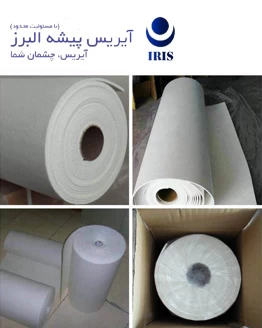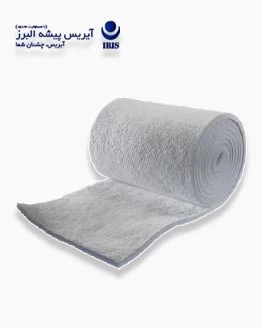Ceramic fiber refractory cotton
Refractory cotton, or bulk ceramic fibers, is a kind of artificial fibers made of aluminum silicate, which have high refractory properties and are made from the fusion of pure alumina powder (Al2O3) and silica (SiO2) and for higher temperatures than zirconia (ZrO2) in an arc furnace . Electric T is produced from the resulting melt during the Boling or Spinning process.
The obtained white ceramic fibers have an amorphous structure, the fiber diameter is 2 to 5 microns and its length is between 30 and 50 mm.
These ceramic fibers can be used as refractory thermal insulation in various forms and widely up to a temperature of 1430°C.
Refractory cotton is used to produce ceramic fireproof blanket, ceramic board, ceramic fireproof paper, all kinds of thread, rope and ceramic fireproof fabric. It can also be used raw and bulk for filling and sealing as thermal insulation in high temperature environments.
Its other uses include expansion joints, emergency and urgent repairs, and making composite materials.
Features of fireproof cotton:
Low heat transfer
Chemical resistance at ambient temperature and high temperatures
Low heat capacity as a result of low heat and energy storage and consumption
High resistance to thermal shock
Suitable and high elasticity
Low density and light weight
Sound insulation and sound absorption
Pyrotherm refractory cotton is produced by the spun method, and due to the purity of its raw materials, which is produced from high purity alumina, silica, and zirconia, it is white in color, with long and continuous fiber length, and with minimal shot.
As a result, its high chemical and mechanical resistance at ambient temperature and high operating temperatures, suitable thermal stability and very low thermal shrinkage (below 3%) have made it a suitable option for wide applications as thermal insulation.
 +7929688-88-14
+7929688-88-14

 English
English
 Persian
Persian
 Russian
Russian
 Chinese
Chinese


 +7929688-88-14
+7929688-88-14

 Fireproofing Materials
Fireproofing Materials

.jpg)

